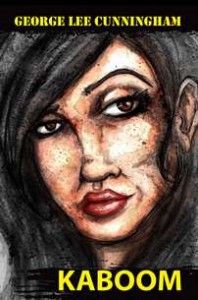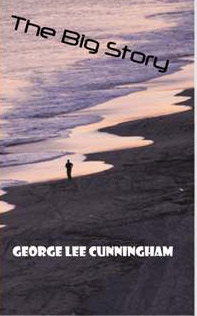Chasing the News in a Skirt and High Heels
By: George Lee Cunningham
 Mary Neiswender is an old-school reporter who walked away from daily journalism more than 30 years ago after a beef with her editors over news coverage and the lack thereof. She talks about that and much more in her recently released book “Assassins… Serial Killers… Corrupt Cops… Chasing the News in a Skirt and High Heels.”
Mary Neiswender is an old-school reporter who walked away from daily journalism more than 30 years ago after a beef with her editors over news coverage and the lack thereof. She talks about that and much more in her recently released book “Assassins… Serial Killers… Corrupt Cops… Chasing the News in a Skirt and High Heels.”
Part autobiography and part true crime, Neiswender’s book is interesting, readable and disturbing. But it’s not perfect, and it’s not for everybody.
If there is a primary message in the book, it is this. Evil exists in our world. It lurks outside our doors, it lives down the block, it watches our children as they frolic on the playground, and it respects no one and no thing. It takes many forms. It might be a scraggly low-life living in the shadows, a dumpy, middle-aged lady with a gun in her purse, a crime-savvy prosecutor with a trigger temper, a respected doctor with a bright smile and a dark secret, a pervert whose joy is in the screams of his victim, or even a guy in uniform driving around town in a black-and-white with flashers on the roof.
If you are an opponent of capital punishment, this is a book that might change your mind.
Neiswender’s talents are getting the worst elements of society to talk to her, of writing down what they have to say in a crisp and readable narrative, and then being able to compartmentalize her world so she could go home each night and cook dinner for her kids.
The mystery is how she could listen patiently without judgment as killers and perverts poured out their pathetic secrets and excuses and not reach across the table and smash them in the face with the nearest blunt object. The judgment came later in the stories she wrote and the dark places in which she shined her light.
Having said all that, there are places that the book drags. In the chapters on Larry Bittaker and his friend Roy Norris who went on a killing, rape and torture spree that ended with five teenage girls dying horrific deaths, I had to force myself to plow through the graphic details of one killing after another. It was the same things with William Bonin, the notorious Freeway Killer, who with various accomplices and sometimes alone picked up young men for his sadistic pain and death games.
Neiswender said she left out many of the graphic details, but as I read about one victim after another I found myself feeling like she didn’t leave out enough. Sometimes less is more. After a while the horrific chronicle of William Bonin’s sadistic journey through young victims began to lose its emotional jolt. After a while, the shock is replaced by detached accounting – a spread sheet of various victims and how they died.
It’s one thing to recognize the victims as real human beings, but quite another to be treated to a tour of their sufferings and deaths.
The serial killers of Neiswender’s book are not the Hannibal Lecter evil genius so popular in the movies. They are basically low-life cowards and losers with an obsession to cause pain and suffering in others. They are not smart. They brag to their criminal friends and share photos of their victims; they document their killings and keep souvenirs in their homes so they can relive their adventures. And they take stupid chances because they begin to think they can get away with anything.
The only reason they do get away with it for as long as they do is because their motives are so bizarre, because their victims are chosen at random and because police forces – like most other workforces – have a goodly share of lazy and incompetent employees.
Neiswender calls herself a “cop lover” in the book, and many of her stories detail cops who were tenacious and persistent in getting to the truth and putting lawbreakers behind bars.
But to her credit she doesn’t back off when it comes time to hold cops accountable. She talks about cops holding a fund-raiser for Dr. Jeffrey MacDonald – the former Special Forces officer who brutally murdered his pregnant wife and 5-year-old and 2-year-old daughters and almost got away with it. She talks about the cops’ reluctant investigation of a popular district attorney who murdered his unfaithful wife and her lover. And she tells of the cops who failed to make the connection between a missing boy and a John Doe murder victim until his frantic family finally shamed them into sending the boy’s dental records to the State Department of Justice. When they did, the boy was found within 24 hours, where he had been lying unidentified in a morgue for four months.
And she talks about the story that drove her out of daily journalism – the beating and strangulation death of young black athlete Ron Settles in the Signal Hill jail. The story went nationwide, but the new editors at the Long Beach Press-Telegram where she worked attempted to downplay it, she says.
After they took her off the story and assigned others to follow up on it, she quit in frustration, erased her hard drive, and drove home. It was a bitter end to a career she loved.
Despite my criticisms, I enjoyed the book and I recommend it. It recalled a time and place that I remember and told not only the story, but the story behind the story. It’s not a perfect book. Few are. But it’s a good book and worth the read.
You can order Assassins… Serial Killers… Corrupt Cops… at amazon.com
George Cunningham and his wife Carmela are writing a history of the Port of Long Beach. You can order George’s novel, Kaboom, at amazon.com










Comments